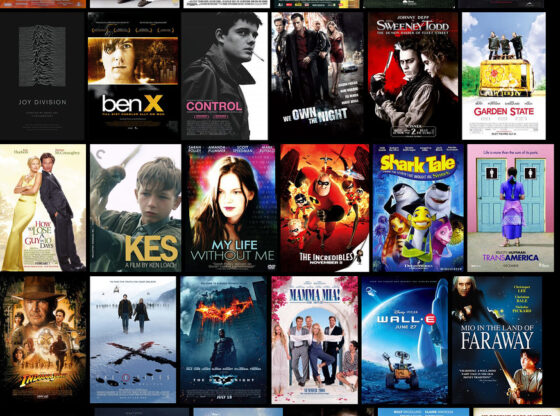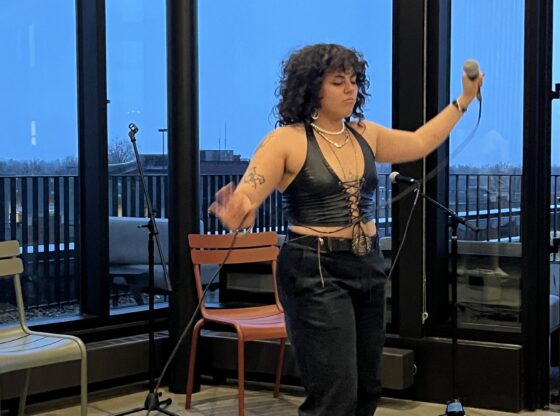Throughout recent television history, we’ve come to know and love multiple female characters: Buffy Summers (“Buffy the Vampire Slayer,) Peggy Carter (“Agent Carter”) and Leslie Knope (“Parks and Recreation”), just to name a few. The presence of strong women in television is growing—a fact that is pleasing a lot of people around the world. But just how much is it actually changing?
Recent statistics say that the change is there, but it’s moving slowly. According to a study from San Diego State University, women now account for 42 percent of all speaking characters on broadcast networks, cable and Netflix programs from 2012-2013 (notably, this still does not reach the real ratio of women to men, with women comprising about 51 percent of the world’s population). In 1997-1998, women played 39 percent of roles, only 3 percent lower than it is now.
“Right now, our department actually has more men than women, which is rare in theater departments in universities,” says Addie Mann, a senior theater major at DU from Golden, Colorado. “However, the higher male population reflects what we see in the real world: men typically get more opportunities than women in television.”
Female representation in behind-the-scenes work is also rising. According to the same study, 28 percent of behind-the-scenes workers are female, a 7 percent increase from 1997-1998. Females are more likely to be producers, while the amount of women directing is still miniscule at only 12 percent.
“Ideally, I want to see more women in big picture roles,” Mann claims. “I want to see more women producing and writing and directing and more three dimensional, independent, human female characters.”
Despite the slight increase of female representation in and behind television, the nature of the female roles still has to be considered. A joint study, conducted by USC Annenberg and the Geena Davis Institute on Gender in Media, concluded that women in television are still highly sexualized and often stereotyped, two problems that occur at a much lower rate in depictions of heterosexual white men. Women also hold less powerful occupations in television. For example, 95.5 percent of high-level politicians in prime time programs are male characters. Women are also much more likely to be sidelined as side characters than their male counterparts, according to the study.
The issue of lack of women in television is intersectional—according to the Gay & Lesbian Alliance Against Defamation (GLAAD), of television characters, only around 27 percent were people of color, only around 3 percent identified with sexualities other than heterosexual, and there is still little to no representation of disabled or transgender characters. A majority of female characters on television are white, straight and able. The depiction of females is very narrow, which does not reflect the true population.
Female characters must be evaluated for their function: are they weak characters? Do they only serve to further a man or some sort of plot point? Strong, feminist female characters still are a rarity. While we may have characters such as Peggy Carter and Leslie Knope, women still often are depicted as damsels in distress. We must evaluate the females currently shown.
The Bechdel Test tries to evaluate women in television with a few, basic criteria: one, the work of fiction must have two or more women in it; two, these women must speak to each other; and three, they must speak to each other about something other than a man. The results are shocking—only around 53 percent of movies pass all three of these criteria. While stats are not available for television (the Bechdel Test is primarily used for movies), it shows just how low the bar has to be set for female representation.
“Usually they’re only a girlfriend or a supporting character, or the best friend to the male character; they usually don’t have their own main storyline,” said Hillary Manness, a undeclared first year-student from Houston, Texas who took an FSEM about feminism in “Buffy the Vampire Slayer.”
“They’re either sexualized or made off as the geek that you would never sleep with.”
Mann concurs with this pattern.
“A lot of time, women are offered one of a few roles: one of which is the love interest, in which she only exists to fulfill the man’s needs, or there’s a kind of sidekick best friend to the man or she’s a controlling [expletive] character,” said Mann.
In order to be considered a strong character, females must be able to undergo a transformation, and exude independence and decision-making. Portraying a female as a caregiver or mother is perfectly acceptable, but television shows must depict other facets of their personalities. Female characters cannot be shown as objects or plot points, but as multidimensional humans. Overall, while physical representation may be on the rise, television must focus on presenting socially realistic females.
Mann has high hopes for the future of women in film and television.
“I want more narratives about women that don’t center around men—I consider myself an ardent feminist, and the media reflects our current society. Media informs our youth, and I want it to value women and provide leadership and opportunities for women. Everyone is affected by media,” said Mann.











